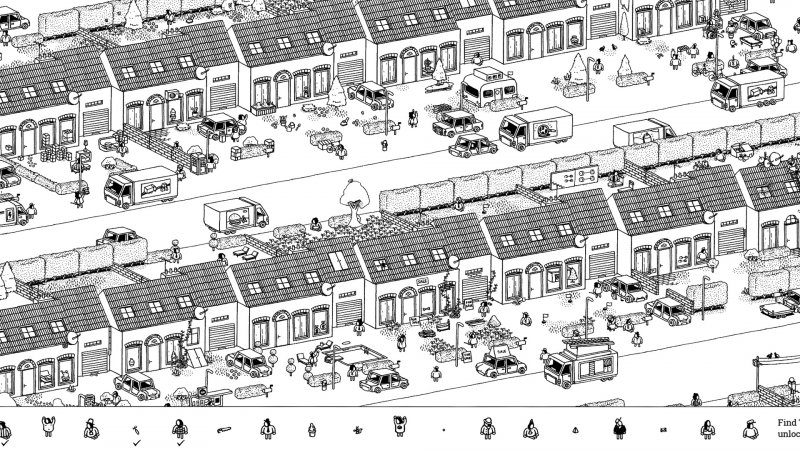When in the mid-’80s the English illustrator Martin Handford began to draw a series of strange and complex tables full of characters and details, among which readers had to see the little Wally thanks to its showy white and red stripes probably he did not even expect to have given rise to a kind of mass phenomenon.
The idea is very simple how to find a character hidden within a large image, but hides a very complex and expensive elaboration on the part of the illustrator, who is having to fill the scene with a disproportionate amount of other characters, objects and various elements of the scenery, above all extremely detailed in the classic Handford style. Perhaps also for this reason the imitations of “Dov’è Wally?”
they have never equaled the quality and notoriety of the originals, but at least some reworkings are able to achieve excellent results, as this Hidden Folks demonstrates. Developed by Adriaan de Jongh with the fundamental contribution of the designer Sylvain Tegroeg
,the game demonstrates how the Handford concept can be applied in an original way even today, finding in mobile platforms a particularly suitable and comfortable home. The developer in question has a history of alternative titles with the label Game Oven Studios (Bam Fu, Jelly Reef, Fingle), so the know-how in creating games quite out of the box is certainly not in question, and when this experience is combined with an original trait like that of Tegroeg, the result can only leap to the eye.
In fact, Hidden Folks bases his whole structure on the drawing, using it to build the playful mechanics but also a vague form of environmental narration that makes everything a particular experience, beyond the simple game of visual skill at the base of the whole.
We talk about Hidden Folks as a sort of “Where is Wally?” But there’s something more in this game …
THE SPY
The game offers a long series of hand-drawn illustrations in 2D full-screen or “navigable” by scrolling the shot in every direction, in each of which we are required to find some elements between characters, animals, objects and more.
The concept is therefore very simple, it is just a matter of sharpening the view and finding the subjects in question, which blend in with the scenery thanks to the quantity of visible details and the very wide scale of the illustrations, giving the elements very small and not very visible a first glance.
Or they actually hide behind other elements, and then it becomes essential to interact with the objects in the illustrations by observing the reactions that can be triggered, all accompanied by fun animations and sound effects. In this lies the most properly “adventure” feature of Hidden Folks: each object to be found is accompanied by a brief description that provides some clues about where it is located within the scenario
and at that point it is up to us to figure out which area to focus on and then eventually touch around the screen in search of the right reaction to make it emerge, unless it is already visible. It is true that this mechanics brings with it the intrinsic defect of the possibility of touching blindly, hoping to solve something even without much reasoning, and the problem is that this “technique”
also bears good fruit, but is lost in this way the essence of Hidden Folks, a game composed of relaxed rhythms focusing on attention and patience. It is a title that can generate a bit ‘of frustration in the particularly complex screens, difficult to manage on smaller screens, but that in general makes calm and reflection almost zen its supporting elements.

